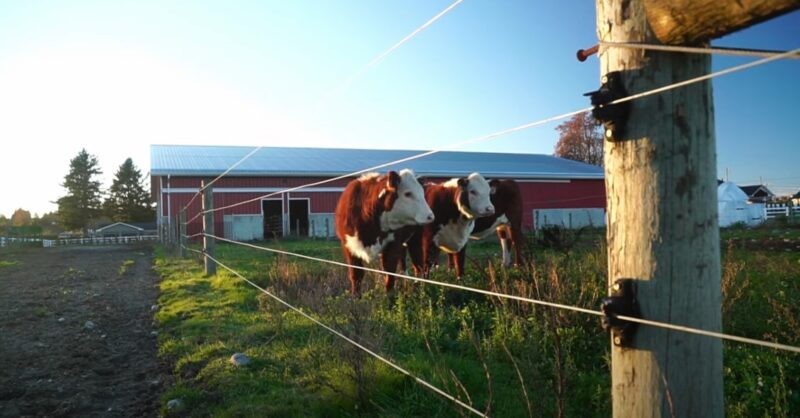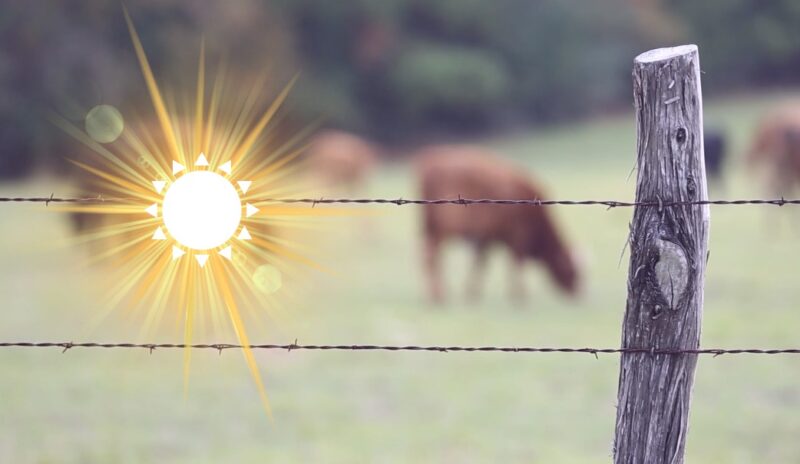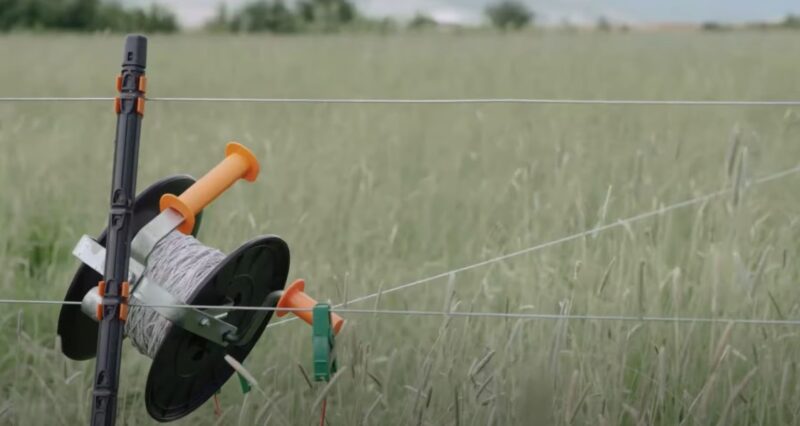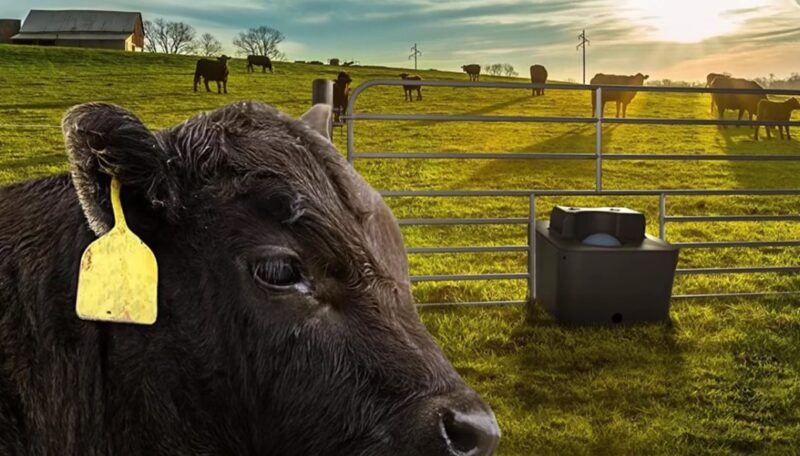Picture this: a serene countryside with lush meadows, where your cherished animals frolic freely, protected and content. Now imagine achieving this pastoral dream effortlessly and efficiently with the installation of an electric fence. But here’s the catch – the world of electric fencing can sometimes be as bewildering as trying to herd cats if you’re not sure where to start, especially when it comes to picking the heart of the system: the fence charger.
Fret not, for this guide is your trusted shepherd, guiding you through the pastures of information, ensuring that you select the ideal fence charger to keep your beloved animals safe and secure, while also preventing uninvited guests from trespassing.
Embarking on this journey requires just a dash of dedication to research and an appetite to understand the mechanics behind different chargers. Before you know it, setting up an electric fence will feel less like climbing a mountain and more like a walk in the park! The cherry on top? You’ll have ample time and zest left to indulge in life’s other pleasures.
So, what exactly does it take to fortify your sanctuary? An electric fence charger that packs the right punch is crucial. This little gem breathes life into your electric fence and keeps your livestock cocooned in safety, while deterring predators with a firm, yet harmless reminder to keep their distance.
Selecting the perfect charger is akin to choosing the conductor for your orchestra; it must wield the baton with precision, ensuring the harmony of your enclosure. The crux lies in understanding the symbiotic relationship between the energy output measured in joules, the volts, and the length of the wire your fence requires.
In this whirlwind of numbers, an easy-to-remember formula can be your North Star. Just like piecing together a jigsaw puzzle, it helps in painting a clear picture of the requirements of your fencing system.
The following guidelines will help you to find the right electric fence charger for your needs.
1. Power
Power is measured in joules or watts. The more power the box has, the more damage it can do to any animal that touches it. If your livestock are very large, you should go for more power.
2. Length of Fence
This is the number of acres you want to enclose. A three mile per hour wind needs a charger with about one joule of power for every two acres.
3. The Strength of the Wire
Another thing you need to consider is the strength of the wire. The more power, the thicker and stronger your wire needs to be.
4. Operating Modes
Some offer quick burst of power to the wire, some continuous. These are all options you can choose for your fence.
The benefits of using an electric fence for your home and farm

Top 7 Best Electric Fence Charger For Cattle 2023:
1. AgHorse 4 joule Electric Fence Charger
It has a strong electronic pulse which gives the animals a good jolt. It has a kit of wire and insulators to get you started with no fuss.
2. AgHorse 6 joule Electric Fence Charger
This is a powerful and very effective electric fence charger for livestock. It even has a LCD screen to help you monitor your fence.
3. Greencorp 3500-12 Mile Solar Electric Fence Charger
This is a very powerful electric fence charger with a solar panel. It is waterproof and very easy to install.
4. Red Snap’r 3500-12 Mile Solar Electric Fence Charger
This is a reliable and durable electric fence charger. If you have a ranch or farm then this is a very good option.

5. Red Snap’r 10 Mile Solar Electric Fence Charger
This is the smaller version of the above. It is also a very good and reliable electric fence charger.
6. AgHorse 12 joule Electric Fence Charger
This is a very good and powerful electric fence charger. It has all the features you will need as an amateur farmer as well.
7. Red Snap’r 6 Mile Solar Electric Fence Charger
This is the smallest version of the above chargers. It is very easy to use and install. It is also waterproof and comes with all the accessories needed.
With the above list you can take your pick and choose the best electric fence charger for cattle for your needs. You should also consider the budget as all of them are reasonably priced.
The benefits of using an electric fence for your home and farm
Here are some of the benefits to consider:
- It is very safe for all animals including your children and pets.
- It is portable- you can take it with you when you move.
- It has very low maintenance costs, only the electric fence charger needs to be checked regularly.
- They are very cost effective and will save you a lot of money in the long term.
- They are also safe and effective for both small and large livestock.
- You can enclose any size of land with an electric fence.
The different types of chargers available today

There are a few types available today. Some have a higher power while others can be used to span very long distances.
1. Timed electric fence
This type of charger has a timer and you can set it to go off at certain times. It is used in situations where you don’t need to use it all the time.
2. Solar powered electric fence
This is another type, where your charger harnesses solar power to charge itself. It is mainly used in rural areas.
3. Electric fence for dogs
This type of charger is available in both solar and electricity versions. You can find one that perfectly matches your needs.
4. Permanent electric fencing
This type of electric fence is best suited for horses. If you want to keep anything else in place, you can get it for your own yard or garden.
5. Electric fence chargers for cattle
These are generally more powerful and used in large areas to keep all types of livestock away from the fencing area. These can be powered by solar or electricity. They also come with extra features like sending signals when there is a problem with the fence.
6. Portable electric fence
This type is usually powered by batteries. These are ideal for large areas, but they are not very strong.
Tips on how to install
- Check with your state and local authorities before you begin to make sure it is not against any law.
- Make sure the wire is safe and properly connected to the charger.
- Check the batteries and ensure they are working perfectly.
- Mark your property line with either a flag or paint.
- Make sure your fence covers enough area for your needs.
- Add an additional wire to the fence in a zigzag pattern to make sure the deer and other wildlife do not jump over it.
- Keep your fence in good condition.
- If you are using the electric fence to keep pets in place, make sure they are trained on how to use it.
- Make sure you have a good charger for your needs and that it is compatible with the wire you are using.
- Use a grounding rod to protect it from lightning.
- Remember that high winds can cause the fence to get damaged and you may need a new charger to ensure it works.
- Make sure you use the electric fence only as a temporary solution and to keep your livestock away from your fencing area, and not in place of a permanent fence.
- If you are using the electric fence for security purposes, make sure it is high enough to not be seen.
What you need to do in case of power surge and lighting strikes
If you experience a power surge in your fence, release the wire immediately and wait for it to die down before using it again.
Lighting strikes may cause your wire to go dead, so check it thoroughly for damage.
If you notice any of the above problems with your electric fence, either replace it or get a professional to do it for you.
Choosing a battery or solar powered model
Battery powered models are more common as the chargers themselves are cheaper. If you want a charger for your yard or garden, a solar powered one is ideal.
You should also consider the height of your fence. If it is too high, you will need a higher powered charger to keep them out.
FAQs

1. How many joules should a fence charger have?
Electric fence chargers should always have a minimum of 4 joules. The higher the number, the better it is for keeping your livestock or pet in place.
2. How can I make my electric fence more powerful?
This is a question many people ask. The best way to do this is by adding more wires/lengths of wire. If you are using wire, the more you add the better it will be for your fence.
3. What is a good voltage for an electric fence?
The best voltage for an electric fence is 220. This is because it has the right amount of juice to keep your livestock in place but not too much as to injure them.
4. What is the hottest solar fence charger?
The Red Snap’r 3500-12 mile solar electric fence charger is the hottest one. Solar fences are very good as they do not require a lot of money and maintenance.
If you’re looking for the best electric fence charger, there are many options to choose from. However, don’t let this overwhelm or confuse you. Instead of making your decision on price alone, take a close look at all available features and make sure that they meet your needs before purchasing anything.
For example, some chargers can be powered by solar energy while others require electricity; if power is unreliable where you live then it may not be worth risking life and limb with an electric fence charger that requires electricity!
With so many choices out there it’s important to do research beforehand instead of rushing into any purchase without considering the consequences.
Final Words
As the sun sets behind the rolling hills, casting an ethereal glow upon your pastoral haven, you stand by the electric fence you’ve just set up. The air is filled with a sense of accomplishment, as the fruits of your labor now safeguard the ones you hold dear.
In your hands, you clutch this guide, the shepherd that guided you through the valleys of decisions and the mountains of information. It feels somewhat surreal, the journey that began with trepidation has culminated in this moment of tranquility.
The whispers of the breeze through the meadows speak of a land safeguarded, where the heart of your enclosure, the electric fence charger, beats in synchrony with the very pulse of your haven. The symphony it conducts with the precision of an adept maestro ensures that every strand of wire sings the song of safety and security.
